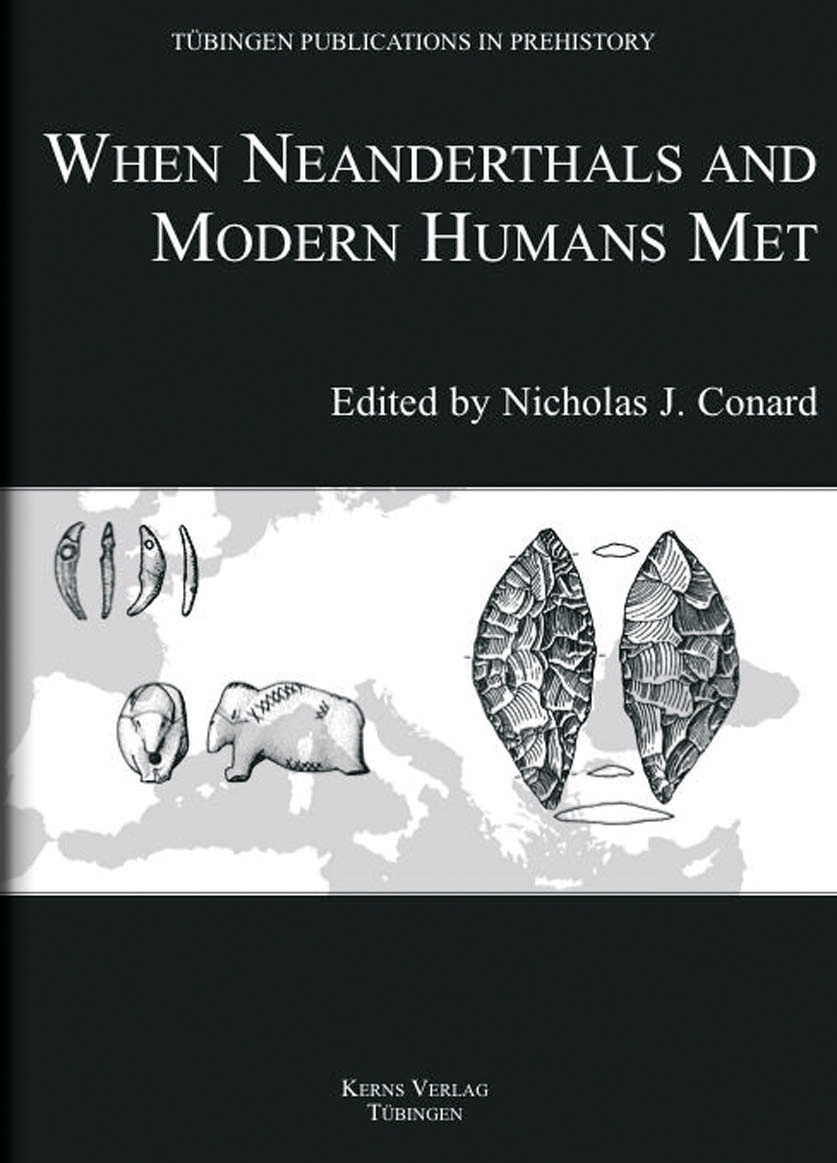Description
The fate of the last Neanderthals and the spread of Modern Humans across Western Eurasia are among the most hotly debated topics in Palaeoanthropology. Leading scholars from around the world assembled in Blaubeuren, Germany, to address these issues. Their work and the current state of research are reflected in this volume.
The authors
Daniel S. Adler, Shara E. Bailey, Federico Bernaldo de Quiros, Ofer Bar-Yosef, Hervé Bocherens, Michael Bolus, Günter Bräuer, Nicholas J. Conard, Françoise Delpech, Dorotheé Drucker, Biagio Giaccio, Paul Goldberg, Donald K. Grayson, Miriam N. Haidle, Erella Hovers, Jean-Jacques Hublin, Katherine Monigal, Philip R. Nigst, James F. O’Connell, Marco Peresani, Jiri Svoboda, Erik Trinkaus, Vitale I. Usik, Manuel Vaquero, and Gerd-Christian Weniger
Rezensionen
The importance of [a] wider context is explored in Conard’s useful edited volume, also published in the impressive series Tübingen Publications in Prehistory…Twenty contributions range from the Atlantic seaboard to the Levant and north to the Crimea. The contributions are characterised by the presentation of data and an eagerness to discuss models of extinction, transition and contact. With an editorial focus on the centre rather than the refuges at the east and west of the continent, we are better able to appreciate the extent of regional variability among Upper and Middle Palaeolithic populations…
Such investigations of regional diversity, based on local responses to climate and ecology, is welcome. But two papers point the way to a rethink of the relationship between the environment and hominin evolution during this period…First, Bocheron and Drucker’s study of stable isotopes…Second, Giaccio and colleagues examine the significance of the Campanian Ignimbrite (CI) tephra…
As [this book shows], we…need to explore, in more imaginative ways, the fit between the direct measures of diet from stable isotopes and the proxy data from faunal remains that contain so much more information about hominin lifeways than caloric intake.
…this book constitutes a wide-ranging and eclectic (in the best sense of the term) compendium of studies representing where our understanding of the Middle-Upper Paleolithic transition stands at the close of the first decade of the 21st century…
…it is a must-have for the library of any researcher seriously engaged in ‘transition studies,’ as it provides not only abundant new data about the paleoanthropological record of this crucial time period, but also some new and very promising perspectives from which to approach what seem to some to have become a threadbare issue.
…most papers in the book admirably stress the importance of accounting for chronological and ecological variables in interpretations of Neanderthal-modern human encounters. As well, the large number of regional case studies suggests that there might be a growing weariness over ‘one size fits all’ scenarios for the Middle-Upper Paleolithic transition operationalized at the continental scale, a development which I, for one, find heartening.
The book is valuable empirically and by provoking thought…The authors include many of the long-term, major players in the debate, as well as some relative newcomers. They come from Western, Central, and Eastern Europe, from Israel, and from the U.S., giving the book a good balance. Despite the plethora of articles and chapters on this subject in many other recent outlets, it is very useful to have such a collection of uniformly high-quality papers in one, easily consulted volume.
